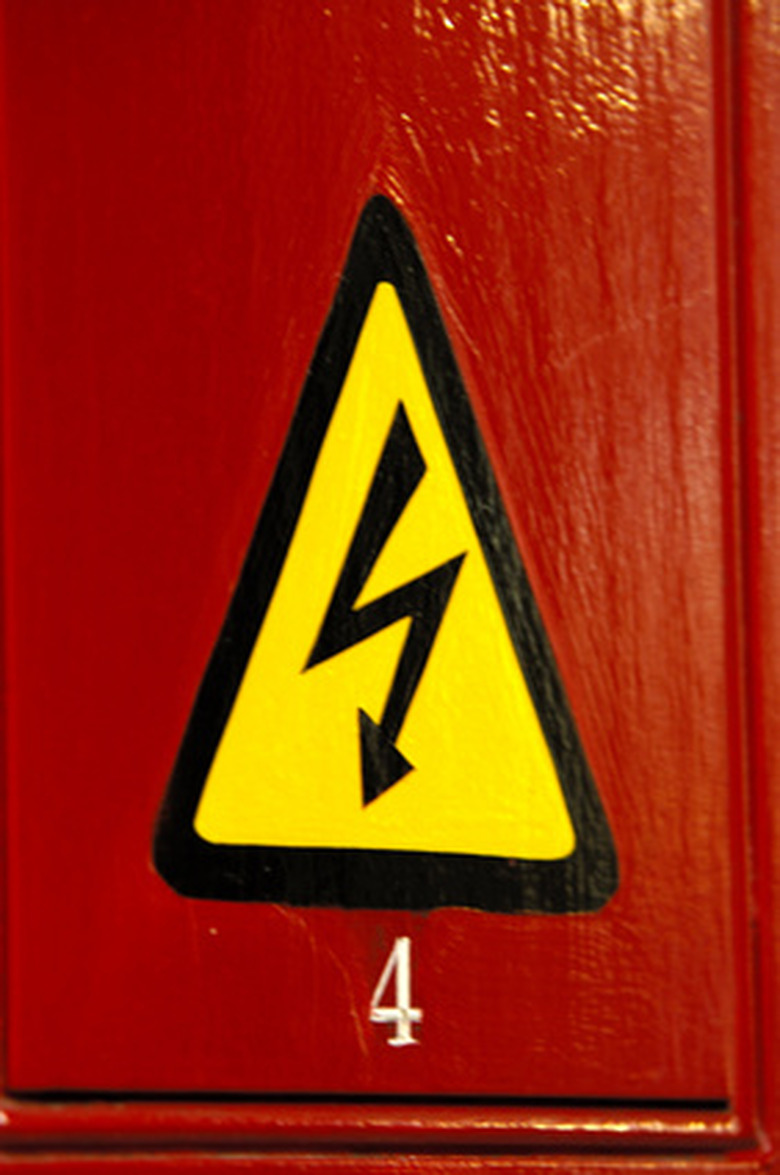How To Install A Shunt-Trip Circuit Breaker
Shunt-trip circuit breakers are usually rated three-phase, 480V or higher and are installed in the same way as other three-phase circuit breakers, with extra remote control circuits to operate the shunt trip and indicate remotely whether the shunt-trip circuit breaker has actually opened. Shunt-trip circuit breakers are used when an operator might wish to remotely trip a breaker because there is some problem in the circuit and the breaker hasn't opened normally. Using the shunt-trip circuit breaker as a remote controlled switch is not recommended, since frequent switching of the circuit breaker will shorten its lifespan.
Step 1
Disconnect the power to the circuit where the shunt-trip circuit breaker will be installed. Install the breaker in the panel and wire up the three phases to the three line-side terminals of the breaker. Wire the load to the three load-side terminals of the breaker. Install a control transformer to step down the voltage to 120V AC. Wire the two line-side terminals of the control transformer to two of the load-side phases of the breaker. Wire the 120V AC output of the control transformer to fuses sized for the nameplate current of the control transformer. Wire one of the fuses out to a terminal. Wire the other fuse to one side of the shunt trip and one side of the breaker auxiliary contact, which is closed when the breaker is closed. Wire the other side of the shunt trip and the auxiliary contact out to terminals.
Step 2
Wire the remote control elements to the remote operator station. Run wire from the breaker panel terminals to the operator control panel. There will be one wire for the 120V AC, one wire for the operation of the shunt trip and one wire for the auxiliary contact. These wires should be wired to terminals on the remote operator control station.
Step 3
Wire up the remote control elements to the operator control push button and pilot light. The operator will have at least a push button to trip the breaker and a pilot light to indicate whether the breaker is open or closed. Wire the 120V AC from the terminal to one side of the push button and to one side of the pilot light. Wire the terminal connected to the shunt trip to the other side of the push button. Wire the terminal connected to the auxiliary contact to the other side of the pilot light.
Step 4
Connect power to the circuit on which the shunt-trip breaker is installed and test the shunt trip operation. Close the circuit breaker manually. The pilot light indicating that the breaker is closed should light up at the remote operator station. Push the push button to activate the shunt trip and trip the breaker. The breaker should trip and the pilot light indicating that the breaker is closed should go out.
Things Needed
- Shunt-trip circuit breaker
- Control transformer, 120V AC
- Two fuses
- Push button
- Pilot light
- Wire
Cite This Article
MLA
Markgraf, Bert. "How To Install A Shunt-Trip Circuit Breaker" sciencing.com, https://www.sciencing.com/install-shunttrip-circuit-breaker-7895204/. 24 April 2017.
APA
Markgraf, Bert. (2017, April 24). How To Install A Shunt-Trip Circuit Breaker. sciencing.com. Retrieved from https://www.sciencing.com/install-shunttrip-circuit-breaker-7895204/
Chicago
Markgraf, Bert. How To Install A Shunt-Trip Circuit Breaker last modified March 24, 2022. https://www.sciencing.com/install-shunttrip-circuit-breaker-7895204/
